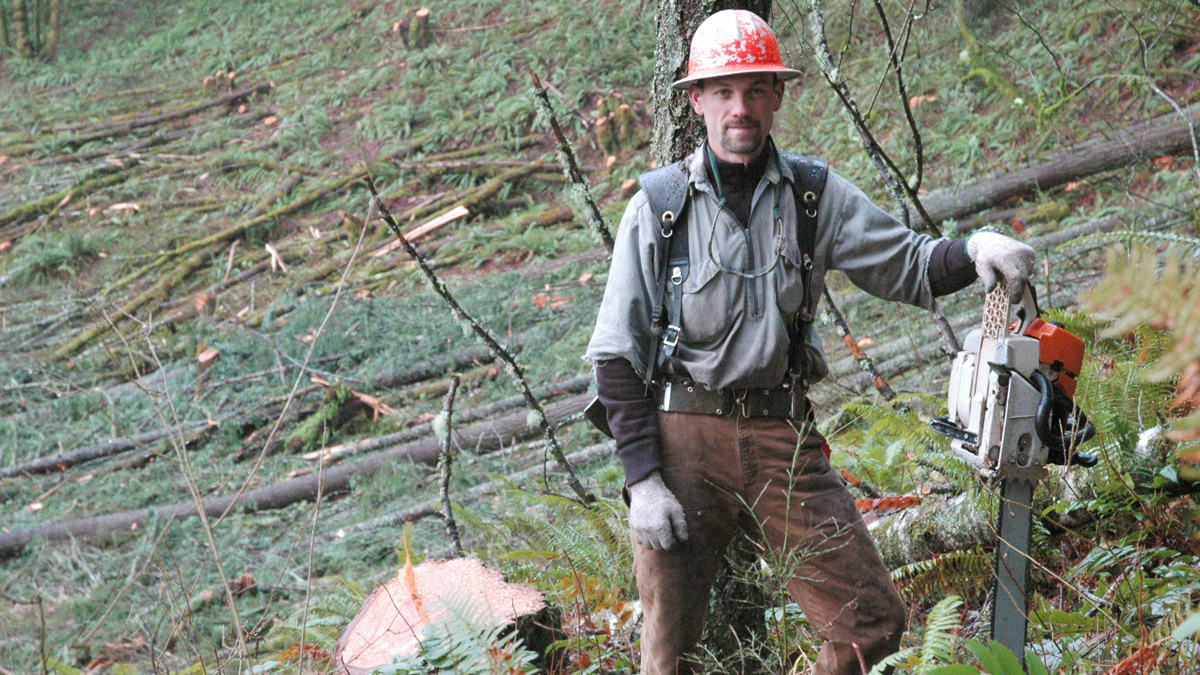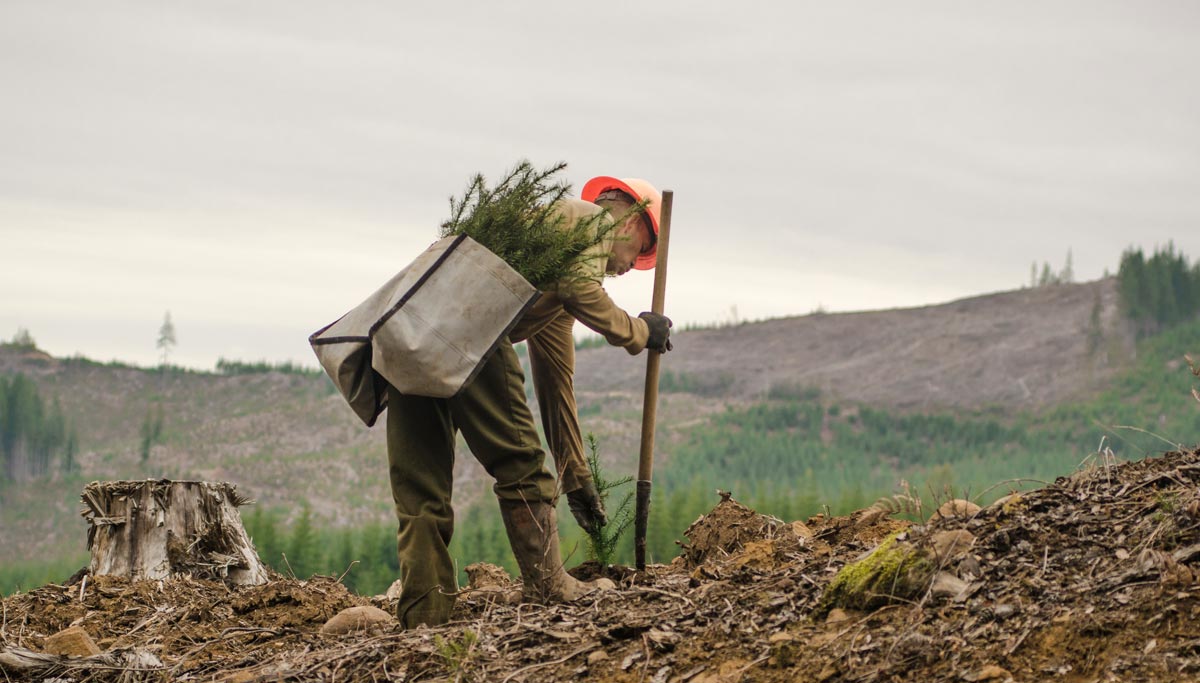Logging
Clearcutting is limited by state law
Oregon rules limit the size of clearcuts (when a forestland owner removes most of the trees in a given area) to 120 acres.
Clearcuts must be no closer than 300 feet to another clearcut. Adjacent lands can be cut when the first clearcut has been replanted and the young trees have grown at least four feet tall, and are healthy and thriving.
During logging operations spanning 25 acres or more, for every acre logged, two live trees or standing dead trees (also called “snags”) and two down logs must be left in the areas where trees have been cut down to provide habitat for animals. See wildlife habitat page for more information. If a logged area is less than 25 acres, landowners may choose voluntarily to leave standing or down trees, but are not required to do so by law.
Oregon law requires that trees be left standing as buffers along streams to protect water, fish and amphibian habitat. See fish habitat page for more info.
Logging is not allowed on steep hillsides where a landslide could affect homes or busy roads.
Clearcuts greater than 25 acres must be replanted with at least 200 trees per acre within two years; the majority of landowners plant many more than that. New trees need to be well-established within six years. See reforestation page for more information.

Reforestation is Oregon law
It is the responsibility of the landowner to establish the next generation of trees after a logging operation. After logging, landowners must complete replanting of areas where the majority of trees have been cut down within two years.

Monitoring and enforcement
If you suspect a violation of Oregon Forest Practices Act (OFPA) regulations regarding logging practices or reforestation requirements has occurred, please contact your local Oregon Department of Forestry stewardship forester, who is responsible for education and enforcement of the state’s forest practice regulations. Find contact information for your local stewardship forester.
Forestland owners who violate the Forest Practices Act could be subject to a fine and must repair any damage to forests from not following the rules outlined in the act. The maximum fine is $5,000 per citation. Landowners, private timber companies and loggers can face more than one of these fines if they break multiple rules.
 Oregon Forest Laws
Oregon Forest Laws